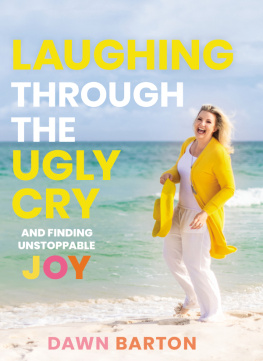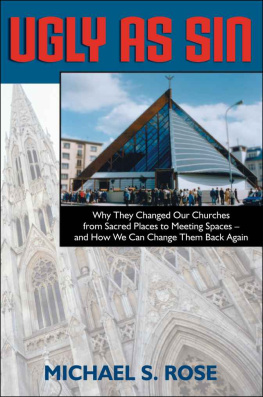The Unknown Billionaires
By Michael Caldwell
Creative Classic Publications Inc.
4121 Rue Du Barrage
Charny, Quebec
Canada
Copyright 2014 by Michael Caldwell and Creative Classic Publications Inc.
All rights reserved. No part of this book may be used or reproduced in any manner whatsoever without written permission, except in the case of quotations that may be used in critical articles and reviews.
This e-book The Unknown Billionaires was published in Canada.
ISBN 978-0-9784620-8-6
TABLE OF CONTENTS
INTRODUCTION
When you hear the word billionaire, the usual suspects come to mind Bill Gates, Warren Buffett, Mark Zuckerberg, Sergei Brin, Larry Ellison, and occasionally, the indefatigable Donald Trump.
What most people dont realize is that the worlds billionaire population has increased a staggering 1000 percent in only the last 25 years. Almost a century ago 1916 the first person to become a billionaire was John D. Rockefeller. If you convert dollars from then to now, he was worth over $500 billion. It gives new meaning to the phrase set the bar high.
For our new book, we chose fifty self-made men and women from the Forbes list of over 1,600 billionaires in sixty-nine countries.
And while you may not know their names, you will probably know of their achievements many of which are products that enjoy worldwide distribution.
Some of these stories will surprise you. Most of the featured billionaires are good people. However, all is not honey and sunshine.
You will read about gambling and cocaine addictions, billion-dollar divorce, suicide, forgery, sweatshops, forced labor, bribery, fraud, embezzlement, tax evasion, an execution-style killing and an international spy.
Although they are all very gifted and very rich, in the end, minus five or six zeroes, most of these unknown billionaires are just like you and me both fantastic and flawed.
S. Daniel Abraham

S Daniel Abraham
Birth date: August 15, 1924
Net worth: $2 billion
Residence: Palm Beach, Florida
On June 6, 1978, a twenty-six-year-old mother of four in Georgia named Gloria Jean Davis developed a severe headache accompanied by bright, flashing lights. When her right arm and leg became partly paralyzed an ambulance was called. On her way to the hospital, Davis slipped into unconsciousness. Doctors determined she had suffered a stroke caused by her nonprescription diet pills, Appedrine.
Davis sued the pill maker, Thompson Medical Company, claiming the pills active ingredient phenylpropanolamine (PPA) had caused her stroke. Thompson Medical denied any culpability and maintained PPA was safe but agreed to pay a $125,000 out-of-court settlement. According to a company spokesman they paid to avoid expensive litigation.
Margaret Forgnone, director of the University of Florida Drug Information Center in Gainesville, called diet pills the most abused drugs sold legally or illegally. I think the drug is dangerous and should be taken off the market.
The New York Times reported, The National Clearing House for poison control centers in August estimated that it handles each year 10,000 reports of phenylpropanolamine poisoning and that the drug forces at least 1,000 to seek emergency care. The Medical Letter, a nonprofit publication that keeps doctors abreast of the latest developments on drugs, is also skeptical about the effectiveness of chemical dietary aids, as is the American Medical Association.
Thompson Medical Company, which marketed several products fueled by PPA, took issue with all the reports that suggested the pills in recommended dosages caused hypertension, strokes, or psychoses. Spokesmen insisted the benefits far exceeded the risks for the vast majority of the American public. But the writing was on the wall now that the Federal Drug Administration had PPA in its sights. (The FDA eventually outlawed PPA in over the counter diet aids due to an increased risk of stroke in younger women.)
By the 1970s, dieting was a $10-billion-a-year industry and growing. The owner of Thompson Medical, a World War II veteran named S. Daniel Abraham, needed a new product that tapped into the United States national obsession with weight loss.
The irony was that Abraham, who owned a medical company, was not a doctor or even a researcher. In fact, he had no college education at all. He was simply an entrepreneur with a nose for what the public wanted.
Abraham was born in Long Beach, New York in 1924 and after graduating from high school he eventually went into the military, fighting in the Army infantry corps in Europe during World War II. After his discharge in 1945, Abraham went to work at his uncles small drug company in New York. One day he came across an advertisement in a trade journal for an itch-relief cream and decided to purchase the product and its manufacturer for $5,000. Abraham traveled neighboring states offering doctors and pharmacists samples of his product and leaving advertising posters. Abraham called his company the Thompson Medical Company.
Abraham used his first profits to hire chemists and pharmacologists to modify other companys products. He also purchased the rights to smaller and less-successful product lines from other pharmaceutical companies, which he modified and then marketed as Thompson Medical products.
In 1956, the company introduced its first diet product, called Slim-Mint gum that contained a hunger suppressant called benzocaine. By 1960, Abraham added a line of diet pills called Figure-Aid. That was followed by Dexatrim, which became the best-selling diet pill on the market and pushed the company past $50 million in sales by the end of the 1970s.
In the late 1970s Abraham decided to bring back an old product idea from the 1950s that may have been ahead of its time. Metrecal, a liquid diet product, had enjoyed some success but weight loss had not become a consuming issue for most Americans at that time. But the cultural revolution of the mid 1960s coupled with new fashion trends that celebrated thinness above all, had made dieting the true national pastime. He was convinced the United States was ready for a convenient, fast meal promising weight loss. He called it Slim-Fast.
However, just as Abraham was getting his diet drink division off the ground, a story came out attributing more than 50 deaths to a liquid protein drink. It was discovered that the heart attacks were caused by the lack of vitamins and minerals in the diet drink. In 1976, the FDA outlawed liquid protein diets due to missing amino acids and complex proteins. All fluid meal-replacement products were pulled from the shelves.
To make up for the loss of earnings, Abraham went public in 1979. The offering brought in $8.4 million in earnings, which he mostly spent on advertising and promotion.
Through his medical community connections he teamed up with MIT physician George Blackburn to come up with a nutritional shake recipe that could be substituted for a proper meal. Blackburns formula included the 24 vitamins and minerals found in todays product. For a convenience-seeking culture, a slimming meal on the go was a perfect fit. But they key now was getting the buying public to believe that his drink was slimming, nutritious, and safe.
Abraham named his product Slim-Fast and its slogana shake for breakfast, a shake for lunch, then a sensible dinnerwas one of the most recognizable ads of the time. And Americans responded.
Slim-Fasts hook was offering a product that was modeled after a tasty milkshake. Abrahams diet system was based on restricted caloric intake. Each Slim-Fast contains between 200-250 calories. To lose weight the consumer drinks two shakes a day totaling five hundred calories and an average dinner of around eight hundred calories. While many people claimed the diet worked, there were also critics who argued that Slim-Fast took weight off at first but as soon as the person stopped using it they gained back their lost weight plus additional pounds.
Next page









![Chloe Caldwell [Chloe Caldwell] - Women](/uploads/posts/book/114454/thumbs/chloe-caldwell-chloe-caldwell-women.jpg)


